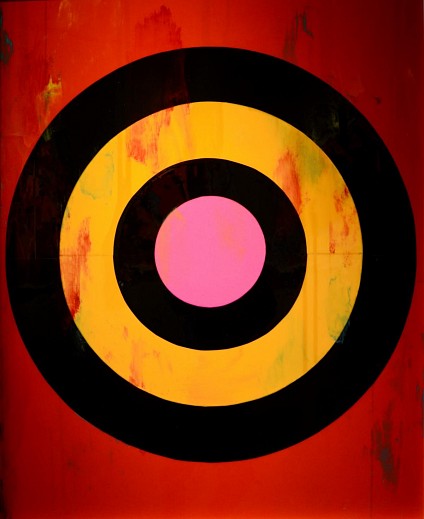
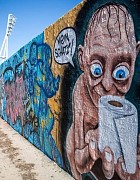
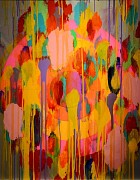
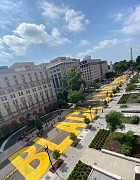
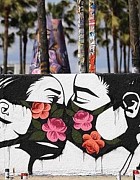
Blog: The Crucible
July 9, 2020 - Joy Reed Belt
The first time I remember thinking about the word "Crucible" was when Arthur Miller's play, "The Crucible" was assigned reading in a Dramatic Literature class in college. The play was written about the Salem Witch Trials. The drama was not intended as an historical piece of literature, but was written as an allegory of the McCarthyism that was sweeping through our country at that time. Although I knew I had enrolled in a course of Dramatic Literature, I was astonished and a little put out at being asked by my Professor to get my brain around two very serious subjects with so many human and political ramifications. After all, I had been attracted to Drama, as a course of study, because it was entertaining and fun. I researched the word "Crucible" hoping it would provide the key to enough knowledge to pass the exam. Then, as now, when one looks up the word "Crucible," there are two primary definitions: A.) A ceramic or metal container in which metals or other substances may be melted or subjected to a very high temperature;" or definition B.) A situation or severe trial, or, in which different elements interact, leading to the creation of something new." At that point I kicked myself for not enrolling in a “History of Musicals” class that met earlier in the morning.
The second time I remember actively thinking about the word “Crucible” was in the late 1990’s when a foundry of that name was built in Norman, Oklahoma. I remember how excited all the artists I knew were to have easy access to a facility that could the produce in bronze the wonderful objects they initially had sculpted in clay. I remember listening to an explanation of the lost wax process and standing in awe while watching a pouring. These past several weeks, for the third time that I can remember, I have been giving serious thought to the word, “Crucible.” This time, in my mind, the word has taken on both the previous meanings while incorporating a third almost biblical definition. We are being severely tested. Our beliefs have been and are being challenged and threatened. Everything we hold dear is in crises: our health, as well as our educational, cultural, political and social systems. These disruptions and visitations of horror are occurring all over the world, but seems to be more frequent and insidious in the United States. Violence is becoming more pronounced and civilized behavior has given way to fearful action and reverberating reaction.
Our solution as a people and as a country may be found in the later part of Definition B for the word "Crucible," which you will remember states: “A situation or severe trial, in which different elements interact, leading to the creation of something new.” But often in order to create we must introduce something new into existence. Artists have been doing that since the beginning of time. Maybe we should all become more like artists by thinking creatively. Whether you recognize and acknowledge it or not, we are all creative. Your form of creativity may not manifest itself with the talent and skill to paint a masterpiece.
But we all have thoughts that are uniquely ours. Most of us do not take the time in our busy lives to nurture and express our innate creativity. That expression doesn’t have to be a time consuming and heavy thing. You can start by organizing and reflecting on your thoughts about what can be done to create a new world where everyone has the opportunity to enjoy good health and is valued as a human being. Still don’t believe you are creative? Here is a link to a “Creativity Test” that will help you identify your type of creativity.
For centuries “Street Art” has been timely and prophetic in its messaging. It’s a very intuitive art form that gives expression to thoughts and the visual expression is not usually meant to be permanent and is often created in public locations. The 35-foot-long “Black Lives Matter” lettering in yellow capital letters, painted on June 5, 2020 in Washington, D.C., has defined a movement. The street artist Shepard Fairey whose work is included in collections at The Smithsonian, MOMA, National Portrait Gallery and the Victoria and Albert Museum in London, became widely known during the 2008 US Presidential election for his Barak Obama “Hope” poster. Murals are a form of street art. The Oklahoma City Public Art Program has embraced murals. The April 23, 2020 edition of Smithsonianmag.com published a wonderful article illustrating “How Street Artists Around the World Are Reacting to Life With Covid19” As you can see all art is not precious, but rather communicates thoughts and feelings. Occasionally it suggests solutions. That's exactly what we all need to do.
Images:
Ford Beckman, "Pop Target No. 1," Paper Construction, Hand Painted, 40 x 32 in., $15,000
Ford Beckman, "Pop Target No. 9," Paper Construction, Hand Painted, 40 x 32 in., $15,000
Street Art shows Gollum from "Lord of the Rings" holding a roll of toilet paper while saying "My Precious" in Berlin, Germany. (Maja Hitij/Getty Images/Smithsonian Magazine)
Street Art on Venice Beach in Venice, CA by Pony Wave portraying two individuals kissing while wearing masks (Mario Tama/Getty Image/Smithsonian Magazine)
Washington, DC - "Black Lives Matter" painted on the street near the White House on June 05, 2020 (Getty Images)
Download Article (PDF)Back to Blogs
